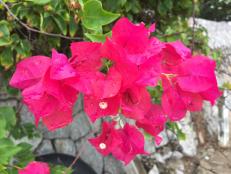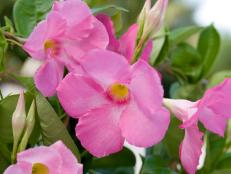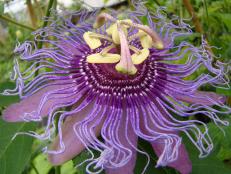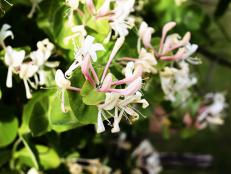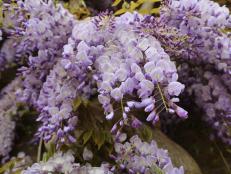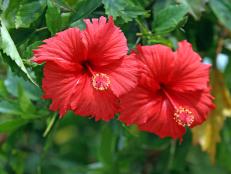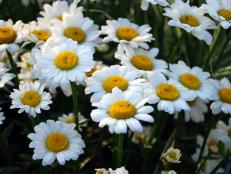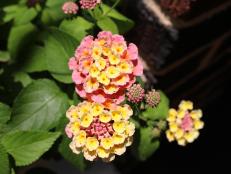Tropical Flowers for Your Deck and Garden
Don't let space limitations keep you from growing sumptuous mandevilla, bougainvillea and hibiscus.


Image courtesy of Costa Farms
Summer will be here before you know it. I’ve been flipping through travel magazines, wishing I could head to some tropical resort for a week or two. Just imagine lounging by a bright blue pool with a cold drink in hand, the aroma of frangipani (and coconut sunscreen) scenting the air.
Sounds like paradise to me.
You may not be planning a beach vacation (if you are, I’m jealous), but you can go native in your own backyard when you dress up your deck with tropical plants like mandevillas, hibiscus and bougainvilleas. They’re all happy to live in containers, which makes it easy to overwinter them indoors. If you don’t want to pot them up, plant them around your porch or other outdoor living area instead to make colorful island beds.
Hibiscus are actually big shrubs (or small trees) that bear trumpet-shaped flowers in white, yellow, red, orange and pink. They can’t survive a freeze, although they can grow to 15 feet if you live where the winters are mild. Hummingbirds and butterflies love them.
Some of the most exciting new hibiscus I’ve seen are multicolored varieties, like the ones in Costa Farms’ Tropic Escape collection. ‘Monsoon Mixer’ reminds me of the colors of an ocean sunset, with its petals streaked with pale lavender and pink.
Other varieties are named for beach-y cocktails, like ‘Mango Daiquiri', which bears flowers in peach, lemon yellow and cherry pink. ‘Sangria’ has dark wine-red flowers, while ‘South Pacific Sipper’ produces doubled, ruffled blooms in shades of pink.
Mandevillas are tropical woody vines with showy flowers. Like hibiscus, they need lots of light and warmth. Try them in hanging baskets if you’re dressing up an outdoor space. Otherwise, they’ll climb nicely on a trellis in your garden or around your mailbox post. They’re easy to grow, but they are delicate, so bring them in when the temperatures drop below 50 degrees, or simply grow them as annuals. I love ‘Garden Crimson’, a new mandevilla developed as a bedding plant. It stays fairy small, at only 12 to 18 inches high.
You can recognize a bougainvillea by its flowers, which look like they’re made out of crepe paper. If you’re looking for a compact variety, try Sunvillea ‘Rose,’ which grows about 4-8 inches high and 3 to 6 inches wide — it really is small, for a bougainvillea. The deep-pink to magenta flowers are held upright. Sunvillea bougainvilleas also come in cream and very light pink.
How to care for hibiscus:
- Hibiscus like full sun and warm temperatures (above 35 degrees F.). Keep your plants moist, but provide good drainage in a garden bed or container, so the roots don’t stand in water.
- During the growing season, apply a fertilizer that promotes blooms.
- Each spring, replant your hibiscus in a larger pot with fresh soil.
- When the temperatures start to drop, overwinter your hibiscus indoors in a bright spot. It won’t flower, and may even drop yellow leaves, but if you continue to care for it as usual, it should recover until you can move it back outside in spring.
How to care for mandevillas:
- Like hibiscus, mandevillas enjoy full sun and lots of light. Bring them in and treat them as houseplants before the temperature drops to 50 degrees F.
- Water your mandevilla once a week, and don’t let the soil dry out. If your plant is in the ground, use mulch to help conserve moisture.
- Feed with a balanced, water-soluble fertilizer every 2 to 3 weeks.
How to care for bougainvilleas:
- Give bougainvilleas lots of sun and a container or garden spot with excellent drainage. They don’t like wet feet or rich soil. They grow best when daytime temperatures range from 70 to 80 degrees F, and nighttime temperatures stay between 60 and 65 degrees F.
- Let bougainvilleas dry slightly before watering. They produce more leaves than flowers if you overdo it.
- Feed with a tropical plant fertilizer, or use a fertilizer high in phosphate.
- After flowering, bougainvilleas go into a light dormancy and drop their leaves. This is a good time to prune them, if needed. Some people are sensitive and get a rash after pruning these plants, so you may want to protect your hands with gloves.
Once you’ve gone tropical, it’s easy to have a garden party with an island feel by adding a few touches:
- String small globe lights overhead.
- Line paths and walkways with tiki torches.
- Arrange fresh-cut tropical flowers and foliage in a centerpiece or in small vases.
- Serve beverages from glass pitchers filled with slices of lemons, limes or oranges.
- Use small paper umbrellas and paper straws in drinking glasses.
- Serve a menu that fits your theme. Don’t forget the pineapples, coconuts and mangos!






